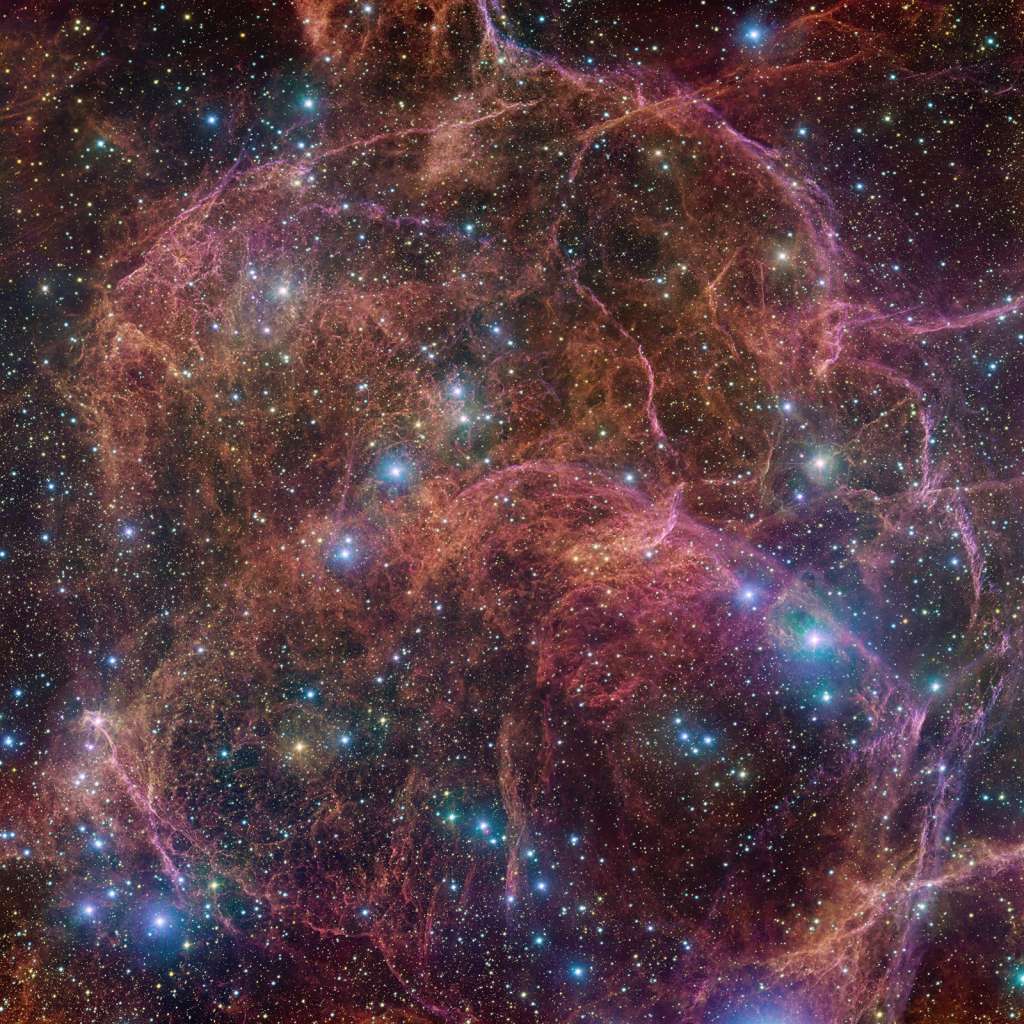(CNN) — Colorful, ghostly remnants drift in space where a massive star exploded 11,000 years ago.
The Vela supernova remnant, named after the Vela constellation, is all that remains after the star reached the end of its life.
Pink and orange gas clouds mark the spot 800 light-years away from Earth, making it one of the closest known features. (A light-year is about 6 trillion miles.)
When the star went supernova, shock waves moved through the surrounding layers of gas released by the star.
The energetic waves compressed the gas and created threadlike filaments that resemble wispy cobwebs.
In a new image of the Vela supernova remnant, captured by the VLT Survey Telescope at the European Southern Observatory in Chile, the glowing threads of gas appear to shine due to heat from the shock waves.
The eerily beautiful sight where the star died was fittingly released on Halloween.
Within the remnant is a dense neutron star, or pulsar, which rapidly spins and releases beams of light like a celestial lighthouse — but it’s located just outside of the region shown in the image.
Nine full moons could fit within the detailed perspective, and the image only reflects part of the giant cloud.
The European Southern Observatory also shared detailed views of intriguing features within the mosaic. The 12 highlights zoom in on different aspects of the bright stars and gas clouds within the region.
The image, which contains 554 million pixels, was captured by the wide-field OmegaCAM on the telescope. The 268 million-pixel camera is capable of capturing images using several different filters that allow for varied wavelengths of light and colors — hence the magenta, blue, green and red colors in the image.
The VLT Survey Telescope is one of the largest telescopes that surveys the night sky using visible light, helping astronomers unlock the secrets of star formation and death.
(Copyright (c) 2024 CNN. All Rights Reserved. This material may not be published, broadcast, rewritten, or redistributed.)

